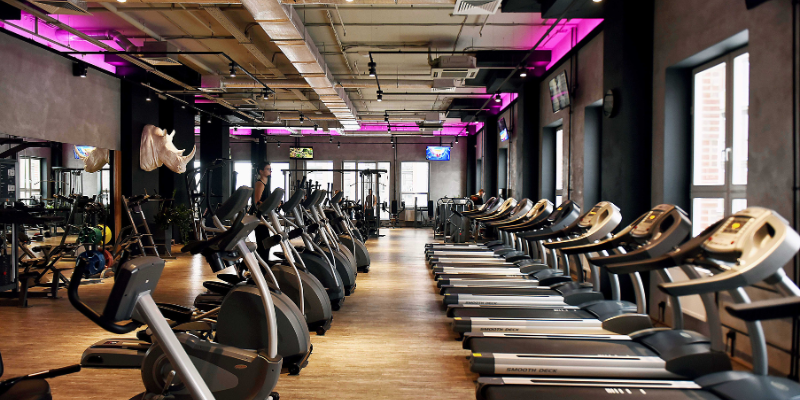Which Burns More Calories: Treadmill or Walking Outside?
Table of Contents
ToggleWhich Burns More Calories Treadmill Or Walking Outside? Treadmills offer controlled conditions but outdoor walking may engage more muscles due to varied terrain. Both burn calories, but outdoor walking may offer additional benefits.

Introduction
In the realm of fitness and weight management, the debate between treadmill and outdoor walking is a perennial one. Individuals seeking to maximize calorie burn often find themselves weighing the benefits and drawbacks of each option. In this comprehensive guide, we delve into the intricacies of calorie burn, the advantages and challenges of treadmill and outdoor walking, and ultimately, which option reigns supreme in the quest to torch calories effectively.
Understanding Calorie Burn
Before diving into the specifics of treadmill versus outdoor walking, it’s crucial to grasp the fundamentals of calorie burn. Calories serve as units of energy that our bodies expend during physical activity. The more strenuous the activity, the more calories we burn. However, several factors influence the rate at which calories are expended:
- Intensity of Exercise: Higher intensity activities typically result in greater calorie expenditure per unit of time.
- Duration of Exercise: Longer bouts of physical activity naturally lead to more calories burned.
- Individual Metabolism: Metabolic rates vary among individuals and can impact calorie burn rates even during similar activities.
Additionally, it’s essential to consider basal metabolic rate (BMR), which represents the energy expended by the body at rest. Understanding these factors lays the groundwork for evaluating the calorie burning potential of treadmill and outdoor walking. Check out One sure fire way to burn belly fat.
Treadmill Walking: Pros and Cons
Treadmill walking offers a host of conveniences that appeal to many fitness enthusiasts. With a treadmill, individuals can exercise regardless of weather conditions or time constraints. The adjustable settings on treadmills allow users to customize their workouts by modifying speed, incline, and even incorporating interval training. However, treadmill walking isn’t without its limitations. Some drawbacks include:
- Monotony: The repetitive nature of treadmill walking can lead to boredom and decreased motivation over time.
- Lack of Outdoor Experience: Treadmill walkers miss out on the sensory experiences and mental health benefits associated with outdoor activity.
Despite these limitations, treadmills remain a popular choice for those seeking a convenient and controlled environment for their workouts.
Healthy Weight Loss As Pure Nature Intended Get More Info!
Outdoor Walking: Advantages and Challenges
Walking outdoors offers a myriad of benefits beyond calorie burn. The exposure to natural surroundings, fresh air, and varying terrain can enhance the overall walking experience. Research suggests that outdoor activity can improve mood, reduce stress levels, and promote feelings of well-being. Read Mental Benefits of Walking. However, outdoor walking presents its own set of challenges, including:
- Weather Variability: Outdoor walkers must contend with inclement weather conditions, such as rain, snow, or extreme heat.
- Safety Concerns: Uneven terrain, pedestrian traffic, and potential hazards pose safety risks during outdoor walks.
Despite these challenges, many individuals find the mental and emotional rewards of outdoor walking to outweigh the drawbacks.

Comparing Calorie Burn: Treadmill vs. Outdoor Walking
The burning question remains: which mode of walking burns more calories? Research findings offer insights into the calorie expenditure associated with treadmill and outdoor walking. Studies suggest that outdoor walking may result in slightly higher calorie burn due to factors such as wind resistance and variations in terrain. However, the difference in calorie expenditure between treadmill and outdoor walking may be negligible for many individuals.
The intensity and duration of the walk play a significant role in determining calorie burn regardless of the environment. Individuals who maintain a brisk pace and incorporate inclines or intervals can maximize calorie expenditure regardless of whether they’re walking indoors or outdoors.
Case Studies: Real-Life Comparisons
In understanding the practical implications of treadmill versus outdoor walking, delving into real-life case studies offers valuable insights into calorie burn and exercise efficacy.
-
Sarah’s Treadmill Challenge
- Sarah, a 35-year-old office worker, embarked on a treadmill challenge to shed some pounds and improve her fitness level. Over the course of four weeks, she committed to walking for 30 minutes on her treadmill every day after work.
- Sarah meticulously tracked her calorie burn using a fitness tracker, adjusting the speed and incline settings on her treadmill to increase intensity gradually.
- Factors influencing Sarah’s calorie expenditure included her walking pace, which started at a moderate 3.5 mph and gradually increased to 4.5 mph over the weeks.
- Despite the controlled environment of the treadmill, Sarah found the monotony challenging and occasionally incorporated interval training to keep her workouts engaging.
- Through her consistent efforts, Sarah burned an average of 250 calories per session on the treadmill.
-
Mark’s Outdoor Adventure
- Mark, a 45-year-old nature enthusiast, preferred the serenity of outdoor walking amidst lush landscapes and fresh air. He embarked on a series of weekend hikes to explore nearby trails and parks.
- Mark’s outdoor walking sessions varied in intensity and duration, ranging from leisurely strolls to brisk uphill climbs. He relied on a GPS watch to track his routes and estimate calorie burn.
- The diverse terrain posed unique challenges to Mark’s calorie expenditure, with uphill segments demanding more energy expenditure compared to flat terrains.
- Despite occasional weather fluctuations and uneven paths, Mark found solace in the ever-changing scenery and natural surroundings during his outdoor excursions.
- Through his outdoor adventures, Mark burned an average of 300 calories per hour-long hike, with fluctuations depending on factors like terrain and weather conditions.
Key Observations and Trends
- While both Sarah and Mark achieved calorie burn through walking, their experiences highlighted distinct differences between treadmill and outdoor walking scenarios.
- Treadmill walking offered Sarah consistency and control over her workouts, allowing for precise adjustments in speed and incline. However, she faced challenges in maintaining motivation due to the repetitive nature of indoor exercise.
- In contrast, Mark’s outdoor walks provided a sense of adventure and connection with nature, enhancing the overall enjoyment of the activity. The varied terrain and environmental factors contributed to fluctuations in calorie expenditure, offering a dynamic exercise experience.
- Despite differences in setting and approach, both Sarah and Mark achieved their fitness goals through walking, underscoring the versatility of this low-impact exercise modality.
Through these case studies, it becomes evident that while treadmill and outdoor walking present unique advantages and challenges, both can be effective strategies for calorie burn and overall fitness improvement. Understanding individual preferences and lifestyle constraints is crucial in selecting the most suitable exercise modality for long-term adherence and success.
Expert Insights: Perspectives from Fitness Professionals
To provide a comprehensive understanding of the calorie-burning potential of treadmill versus outdoor walking, we’ve consulted fitness trainers and exercise physiologists for their expert insights. Here’s what they had to say:
-
Physiological Differences and Effectiveness
- According to Dr. Amanda Rodriguez, a certified exercise physiologist, the physiological differences between treadmill and outdoor walking are subtle but significant. “Treadmill walking offers a controlled environment where individuals can adjust speed and incline to target specific fitness goals,” she explains. “However, outdoor walking engages additional stabilizing muscles due to variations in terrain and weather conditions, enhancing overall muscle activation and calorie expenditure.”
- Fitness trainer John Smith emphasizes the importance of individual preferences and goals when choosing between treadmill and outdoor walking. “While treadmills provide convenience and predictability, outdoor walking offers a sensory experience that promotes mental well-being and enhances motivation,” he states. “Ultimately, the effectiveness of each modality depends on consistency and adherence to a structured exercise routine.”
-
Sustainability and Long-Term Adherence
- Dr. Rodriguez highlights sustainability as a key factor in determining the efficacy of walking exercises. “Incorporating outdoor walks into one’s daily routine promotes a sense of connection with nature and fosters a holistic approach to health and wellness,” she observes. “However, treadmills offer a viable alternative for individuals seeking convenience and accessibility, especially during inclement weather or busy schedules.”
- John Smith emphasizes the importance of variety and progression in walking workouts to prevent plateaus and maintain motivation. “Introducing interval training and incorporating strength exercises into walking routines can enhance calorie burn and promote overall fitness,” he suggests. “Additionally, exploring new trails and scenic routes can invigorate outdoor walks and reignite passion for physical activity.”
-
Practical Tips for Maximizing Calorie Burn
- Dr. Rodriguez recommends incorporating interval training into treadmill workouts to enhance calorie burn and cardiovascular conditioning. “Alternate between periods of high-intensity effort and recovery to stimulate metabolic rate and improve endurance,” she advises. “Experiment with varying incline and speed settings to challenge different muscle groups and prevent adaptation.”
- John Smith encourages individuals to prioritize consistency and gradual progression in their walking routines. “Start with manageable distances and gradually increase duration and intensity over time,” he suggests. “Focus on maintaining good posture and engaging core muscles to optimize biomechanical efficiency and reduce risk of injury.”
In conclusion, both treadmill and outdoor walking offer unique benefits and challenges in terms of calorie burn and overall fitness improvement. By understanding the physiological differences, sustainability factors, and practical tips provided by fitness professionals, individuals can make informed decisions and customize their walking routines to align with their preferences and goals. Whether indoors or outdoors, walking remains a simple yet effective strategy for promoting health and well-being.
Practical Tips for Maximizing Calorie Burn
Regardless of where you choose to walk, several strategies can help you optimize calorie burn and enhance the effectiveness of your workouts:
- Interval Training: Alternate between periods of higher intensity and recovery to challenge your cardiovascular system and boost calorie burn.
- Incorporate Inclines: Walking uphill engages additional muscle groups and increases the intensity of your workout.
- Stay Consistent: Consistency is key to achieving your fitness goals. Aim for regular, sustained activity to maximize calorie burn over time.
By incorporating these tips into your walking routine, you can elevate your calorie burning potential and reap the rewards of improved cardiovascular health and weight management.

Conclusion
In the age-old debate of treadmill versus outdoor walking, there is no one-size-fits-all answer. Both modalities offer unique advantages and challenges, and the choice ultimately depends on individual preferences, lifestyle, and fitness goals. Whether you opt for the convenience of treadmill walking or the sensory experience of outdoor activity, the key is to stay active and consistent in your efforts to burn calories and improve overall health.
In conclusion, the best walking regimen is one that you enjoy and can sustain over the long term. So lace up your shoes, step out into the world, or hop on that treadmill, and start burning those calories one step at a time.
Additional Resources and Further Reading
For more information on calorie burn, walking techniques, and exercise physiology, consider exploring the following resources:
- American Council on Exercise (ACE)
- Centers for Disease Control and Prevention (CDC)
- National Institute of Diabetes and Digestive and Kidney Diseases (NIDDK)
Remember, knowledge is power, and the more you understand about the science of calorie burn and physical activity, the better equipped you’ll be to achieve your fitness goals.
Frequently Asked Questions (FAQs)
-
Is treadmill walking as effective as walking outside for burning calories?
- Both treadmill walking and outdoor walking can be effective forms of exercise for calorie burn. Treadmill walking offers the advantage of controlled settings where variables like speed and incline can be adjusted to target specific fitness goals. Outdoor walking, on the other hand, engages additional stabilizing muscles due to variations in terrain and weather conditions, potentially enhancing overall calorie expenditure. Ultimately, the effectiveness of each modality depends on individual preferences, accessibility, and adherence to a structured exercise routine.
-
What factors influence calorie burn during walking sessions?
- Several factors influence calorie burn during walking sessions, including walking speed, duration, terrain, and individual body composition. Walking at a brisk pace or incorporating uphill segments can increase energy expenditure and promote cardiovascular fitness. Additionally, variations in terrain and environmental conditions can impact the intensity of the workout, leading to fluctuations in calorie burn. Individuals with higher muscle mass and metabolic rates may also burn calories more efficiently during walking exercises.
-
Can interval training enhance calorie burn during walking workouts?
- Yes, incorporating interval training into walking workouts can enhance calorie burn and cardiovascular conditioning. Interval training involves alternating between periods of high-intensity effort and recovery, stimulating metabolic rate and improving endurance. For treadmill walking, individuals can adjust speed and incline settings to create intervals of varying intensity. Outdoor walkers can incorporate intervals by alternating between brisk walking and slower recovery periods. Interval training not only increases calorie burn during the workout but also promotes post-exercise calorie expenditure and fat loss.
-
How can I maintain motivation and consistency in my walking routine?
- Maintaining motivation and consistency in a walking routine requires a combination of strategy and mindset. Setting realistic goals and tracking progress can help individuals stay focused and motivated. Incorporating variety into walking workouts by exploring new routes, listening to music or podcasts, or walking with a friend can make the experience more enjoyable and engaging. Additionally, establishing a regular schedule and treating walking as a non-negotiable part of daily routine can help solidify habits and ensure long-term adherence. Remember to celebrate achievements and milestones along the way to stay motivated on the journey toward improved health and fitness.


